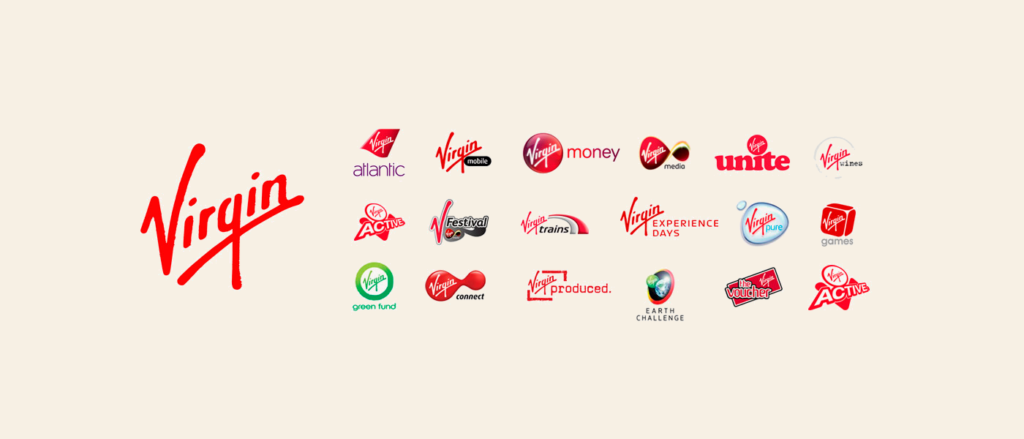Take a look at the previous part of this series.
Welcome back to our growth series as we explore the different ways a company can adapt a portfolio structure as they evolve. In this segment, we’ll look at real world examples of how branded house companies have evolved over time.
As a reminder, in a branded house, all products share a name and ethos with the company brand. The strength of this strategy stems from the strong investment in a single brand identity. This focus allows companies to be more efficient in branding efforts, use existing equity to gain traction in new or expanded markets, and streamline decision making.
Two companies that have grown with a branded house structure over time are GE and Virgin. Let’s take a closer look at their unique approaches:
GE: Transitioning a Branded House
Historically, GE has been a primary example of a branded house. One multi-industry company, in business for more than a century, that spanned nine industries with a shared name, signature monogram logo and a well-recognized blue.
However, in 2021, GE announced its plans to split into three, separately operating public companies across three sectors – healthcare, energy and aviation. And, in late 2022, the company revealed new brand identities. With this reveal, GE has stated that each company will attach “GE” and the monogram to their unique name and primary color:

Logistically, GE Aerospace will be the only company with the GE trademark and will offer long-term licenses to GE HealthCare and GE Vernova for use of that trademark. It will also maintain a less than 20% stake in the healthcare company. However, unlike a traditional branded house, the three companies will not come together at a single point with a shared strategy or leader.
The benefit of this strategy is that each company retains a recognizable piece of a longstanding brand as they get their footing in each industry as a separate company. In fact, GE stated this as the primary reason for the branding choice. It should also allow for little change to the product lines that carry the GE name. However, as the companies gain individual traction, that short-term benefit could give way to long-term confusion. Without a shared strategy to link the three, there could be unwanted overlap in understanding of each one’s strategy, distinct brand and even product offerings.
Only time will tell if this transition from a single branded house to three branded houses that share part of their identities will be successful.
Virgin: Building on a Branded House
Since 1970, The Virgin Group has utilized the branded house strategy adding the signature Virgin name and reg logo to many individual companies and ventures. What started as a mail order record shop has turned into a holding company that is home to more than 40 companies across five business sectors today. Unlike the new GE, there is a shared point at the top in founder Richard Branson and a shared overarching strategy.

Its success lies in the company’s focus on customer experiences, rather than a single industry. In this focus, it has spent time as well as brand/marketing dollars on creating an idea of what a Virgin customer experience might be, rather than spending those dollars on a new brand for every venture. This efficient approach has created a strategy that has allowed for growth into industries far from its musical roots, in part, because a “customer experience” isn’t limited by industry.
Virgin, however, has seen several companies that use the identity fail. Virgin Cola, Virgin Cars and Virgin Brides are all businesses based on an experience that failed to take off the way Virgin Atlantic and others have. This is an important point of consideration for any branded house – calculating the risk of applying the company brand to an entirely new venture. Consideration must be taken on how a failure of a new venture or offering might negatively impact the bigger business.
_____________________________________________________________________________________________________
At BrandJuice, we are a partner in helping you consider all angles of a potential change or evolution of portfolio strategy. If you are in a time of growth, explore our strategy offerings to see how we can help you create a portfolio structure that will serve you well into the future.